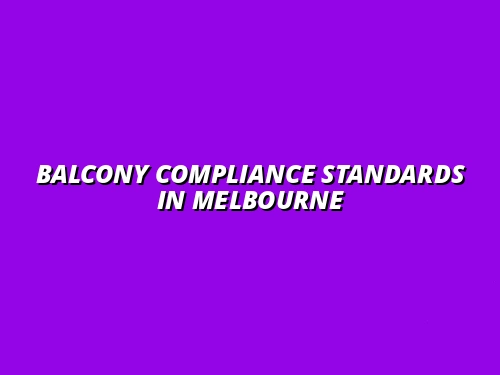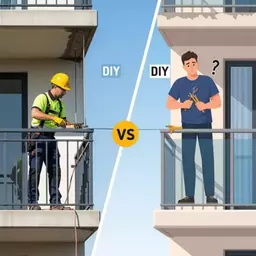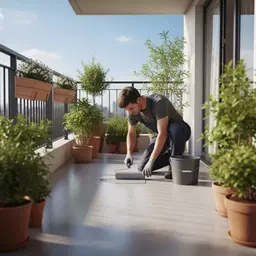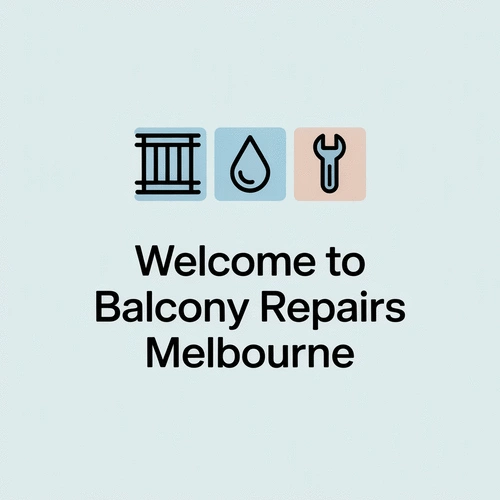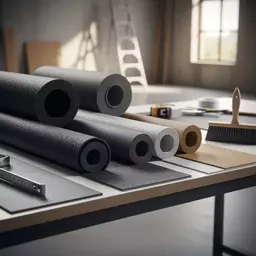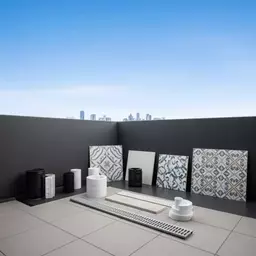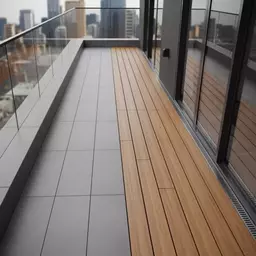What if a small oversight in your balcony’s maintenance led to costly legal fees or even an accident? Understanding the compliance standards for balconies in Melbourne can save you from such scenarios and ensure the safety of your loved ones.
What You Will Learn
- Familiarize yourself with balcony compliance standards to ensure safety and durability.
- Understand the key components of the Building Code of Australia (BCA) relevant to balconies.
- Learn about local regulations in Melbourne, including height restrictions and load-bearing specifications.
- Recognize the importance of the 1-meter rule for balustrades in preventing falls.
- Identify maintenance responsibilities and guidelines for property owners to ensure compliance.
- Understand the risks of non-compliance and the potential legal repercussions involved.
- Discover the permits and approvals needed for balcony renovations and upgrades.
- Learn about the necessity of regular safety inspections to maintain compliance and safety.
- Review essential checklists for balcony maintenance to enhance property value and safety.
Balcony Compliance: Key Aspects & Responsibilities
This visual outlines the critical areas of balcony compliance in Melbourne, highlighting the 1-meter balustrade rule, maintenance responsibilities, and the importance of regular inspections.
Balustrade Height Rule
All balcony balustrades must be at least 1 meter high to prevent falls, especially in high-rise buildings.
Owner vs. Body Corporate
Owners handle day-to-day maintenance & reporting. Body corporate manages shared spaces and common property compliance.
Regular Safety Inspections
Recommended annually for structural integrity, balustrade condition, and waterproofing effectiveness.
Risks of Non-Compliance
Fines, legal action, and liability claims can result from neglecting safety standards.
Comprehending Balcony Compliance Standards in Melbourne
Understanding balcony compliance standards is critical for homeowners, builders, and property managers in Melbourne. These standards are not just regulatory hurdles; they are crucial for ensuring safety and durability. In this section, I'll break down what you need to know about compliance standards, particularly focusing on the key regulations that could impact your balcony.
With over a decade of experience in balcony restoration, I've seen how knowledge of these standards can save you from potential headaches down the line. Let's dive into the essentials! For more detailed guidance on maintaining your outdoor space, explore our balcony care tips for homeowners.
What Are Balcony Compliance Standards?
Balcony compliance standards are a set of regulations that govern the construction and maintenance of balconies in Australia. They ensure that balconies are built safely and can withstand the wear and tear of daily use. The primary document outlining these regulations is the Building Code of Australia (BCA).
Overview of the Building Code of Australia (BCA)
The BCA provides a comprehensive framework that all building projects must adhere to. It covers various aspects, including structural integrity, safety, and accessibility. Here are some critical components of the BCA relevant to balconies:
- Structural safety requirements
- Waterproofing and drainage solutions
- Standards for materials used in construction
Being familiar with these components helps ensure your balcony meets all necessary criteria, making your property safer and more valuable.
Key Regulatory Requirements Specifically for Balconies
In addition to the BCA, several local regulations apply specifically to balconies in Melbourne. These include:
- Height restrictions for safety
- Load-bearing specifications to prevent structural failure
- Compliance with fire safety regulations
These standards are particularly important for property owners to understand, as failing to comply can lead to significant legal and financial repercussions.
Understanding the 1-Meter Rule for Balustrades
One crucial aspect of balcony safety is the 1-meter rule for balustrades. This rule requires that all balcony balustrades be at least one meter high. It's a simple guideline, but its implications are profound.
Importance of Height Compliance for Safety
The height of balustrades is vital for preventing falls, especially in high-rise buildings. A sturdy balustrade provides peace of mind, knowing that your balcony is a safe space for you and your guests. Regular inspections can help ensure that these standards are consistently met.

Specifics on Glass Balustrade Regulations
Glass balustrades are increasingly popular due to their aesthetic appeal. However, they come with specific regulations related to their design and installation:
- Glass must be toughened or laminated for safety
- Minimum thickness requirements to ensure durability
- Proper installation methods to withstand high winds and impacts
Understanding these specifics helps not only in choosing the right materials but also in ensuring compliance during renovation or construction.
Maintenance Responsibilities for Property Owners
As a property owner, knowing your maintenance responsibilities is crucial. Both you and your body corporate (if applicable) have specific roles to play in ensuring compliance and safety.
Owner vs. Body Corporate: Who is Responsible for What?
In most cases, the owner is responsible for maintaining their balcony, while the body corporate takes care of common areas. Here’s a breakdown:
- Owners must handle day-to-day maintenance and report any issues
- The body corporate manages shared spaces and ensures compliance for common property
Being clear on your responsibilities can lead to a more harmonious living environment and safer properties for everyone. If you suspect a leak, learning to spot balcony leaks in homes early can prevent extensive damage.
Insight on Strata Properties and Common Property Maintenance
For those living in strata properties, understanding what constitutes common property versus private property is vital. Typically, balconies attached to units are considered private, but some aspects, like structural integrity, may be common property.
Maintenance Guidelines for Ensuring Compliance and Safety
To ensure safety and compliance, I recommend following these maintenance guidelines:
- Conduct regular inspections for wear and tear
- Address any issues immediately to prevent further damage
- Keep records of maintenance and inspections for future reference
These proactive measures can significantly enhance the longevity and safety of your balcony, protecting both your investment and your peace of mind.
The Importance of Regular Safety Inspections
Regular safety inspections are essential to maintain compliance and ensure the safety of your balcony. They help you identify potential issues before they become costly problems.
Risks of Non-Compliance: Legal Consequences and Liabilities
Failing to adhere to compliance standards can have serious consequences. Property owners risk facing fines, legal action, and even liability claims in the event of an accident. It’s worth investing the time and resources to stay compliant.
Recommended Inspection Schedules and Protocols
I recommend scheduling inspections at least once a year, focusing on key elements such as:
- Structural integrity of the balcony
- Condition of the balustrades and railing systems
- Waterproofing effectiveness and drainage systems
This routine can save you from unexpected repairs and enhance safety.
Building Inspections in Melbourne: What Property Owners Need to Know
In Melbourne, building inspections often require compliance with local council regulations. It’s beneficial to familiarize yourself with these requirements and consult with local experts to ensure your property meets all necessary codes.
Guidance on Balcony Design and Renovation
Planning to renovate or upgrade your balcony? Understanding the regulations regarding design and renovation is essential.
Permits and Approvals Needed for Balcony Upgrades
Most balcony renovations require permits. Depending on your project, you may need to submit plans to your local council. Here’s what you usually need:
- Detailed designs and specifications
- Structural engineering reports if significant changes are made
- Environmental assessments, if applicable
Getting these permits can prevent major delays and ensure your project complies with local laws. For robust protection, consider waterproofing solutions for Melbourne balconies.
Design Considerations for Safety and Aesthetics
While aesthetics are important, safety should always be the top priority. Consider materials that blend beauty with strength, ensuring your balcony is both functional and visually appealing.

Renovation Standards and Compliance for Outdoor Living Spaces
When embarking on a renovation, be mindful of local codes that govern outdoor living spaces. Adhering to these standards not only enhances your property's appeal but also ensures safety for all who use it.
Case Studies and Legal Precedents
Learning from real-world cases can be immensely valuable for understanding your responsibilities when it comes to balcony maintenance and compliance.
Examples of Court Cases Related to Balcony Responsibilities
Several court cases highlight the legal ramifications of neglecting balcony safety standards. For example, a landmark case in Melbourne held a property owner liable for damages due to a poorly maintained balcony that collapsed.
Cost-Sharing Disputes: Lessons Learned
Cost-sharing disputes often arise in strata properties regarding balcony maintenance. Understanding the legal precedents can help foster better communication and shared responsibility among owners.
Enhancing Balcony Safety with Innovative Designs
Innovation in design can significantly enhance balcony safety. As technology and materials advance, so do our options for creating safe and beautiful outdoor spaces.
Modern Materials and Sustainable Solutions
Consider using sustainable materials that are durable and safe for balcony construction. Options like recycled composites and weather-resistant woods can improve both safety and environmental footprint.
Flexibility in Design Standards for High-Rise Balconies
High-rise balconies may have different design standards due to their unique challenges. It’s essential to consult with a professional to ensure you're meeting all necessary codes.
Engineering Standards for Balcony Structural Integrity
Lastly, always ensure that your balcony complies with engineering standards that guarantee structural integrity. Prioritizing these details not only enhances safety but also ensures compliance with local regulations.
Addressing Common Questions and Concerns
As we wrap up this section, let’s address some common questions property owners often have regarding balcony safety and compliance.
What Should Tenants Know About Balcony Safety?
Tenants should be aware of their rights and responsibilities regarding balcony safety. This includes reporting any issues to the property owner promptly.
Emergency Repairs: Whom to Contact and What to Expect
In the event of an emergency, knowing who to contact can make a significant difference. Always have the contact information for local builders or balcony repair specialists readily available.
Understanding Risk Management in Balcony Safety
Lastly, understanding risk management in balcony safety is crucial. Regular checks and adherence to compliance standards can mitigate risks effectively.
Pro Tip
Did you know? Regular maintenance checks can extend the lifespan of your balcony significantly? By conducting inspections at least once a year and addressing any issues promptly, you can avoid costly repairs down the line and ensure compliance with safety standards.
Frequently Asked Questions About Balcony Compliance
Q: What are the primary balcony compliance standards in Melbourne?
A: The primary standards are outlined in the Building Code of Australia (BCA), which covers structural integrity, safety, waterproofing, and materials. Local Melbourne regulations also specify height restrictions (like the 1-meter rule for balustrades) and load-bearing requirements.
Q: What is the "1-meter rule" for balcony balustrades?
A: The "1-meter rule" mandates that all balcony balustrades must be at least one meter high to prevent falls, particularly in high-rise buildings. This is a critical safety guideline.
Q: Who is responsible for balcony maintenance in strata properties?
A: Generally, owners are responsible for day-to-day maintenance of their individual balconies and reporting issues. The body corporate manages shared spaces and common property compliance, though structural integrity of balconies might fall under common property in some cases.
Q: How often should balcony safety inspections be conducted?
A: It is recommended to schedule balcony safety inspections at least once a year. These inspections should focus on structural integrity, balustrade condition, and waterproofing effectiveness to identify and address issues proactively.
Q: What are the risks of non-compliance with balcony standards?
A: Non-compliance can lead to severe consequences, including fines, legal action, and liability claims in the event of an accident. It's crucial to adhere to all safety and building standards to protect both residents and property owners.
Summarizing Balcony Compliance and Responsibilities
As we wrap up our discussion on balcony compliance in Melbourne, it's essential to highlight some key points for property owners. Understanding compliance standards is crucial not only for safety but also for preserving the integrity of your property. Here’s a concise summary of what you need to keep in mind.
Key Takeaways for Property Owners in Melbourne
First and foremost, being aware of your responsibilities can help prevent potential issues down the line. I often find that property owners feel overwhelmed by the complexities of compliance and maintenance, but breaking it down into manageable parts can make it easier. Let’s go over some essential aspects:
- Compliance Checklists: Familiarize yourself with the key regulations that apply to your balcony, including the Building Code of Australia.
- Regular Maintenance: Schedule consistent inspections to identify issues early, ensuring compliance with safety standards.
- Insurance Coverage: Understand your insurance requirements to protect yourself against liabilities related to balcony safety.
By focusing on these areas, you can cultivate a safer environment for everyone who uses your balcony. Remember, compliance is not just about following the law; it's about ensuring the safety of your loved ones and guests!
Essential Compliance and Maintenance Checklist Overview
Having a structured checklist can save you time and effort when maintaining your balcony. Consider this as a starting point:
- Check balustrade heights and stability.
- Inspect for cracks or signs of wear and tear.
- Ensure drainage systems are clear and functioning.
- Verify that waterproofing is intact.
Refer to this checklist regularly to stay on top of your compliance responsibilities!
Understanding Your Role in Balcony Safety and Maintenance
Every property owner has a crucial role in maintaining balcony safety. It’s not just about meeting regulations but also about fostering a culture of safety. This involves:
- Keeping abreast of local compliance changes.
- Educating tenants about balcony safety.
- Taking immediate action on maintenance issues.
When you take these steps, you contribute to a safer community and enhance the value of your property.
Insurance Requirements and Their Impact on Property Owners
Understanding your insurance obligations can be a game changer for property owners. Many are surprised to learn that insufficient insurance coverage can lead to significant financial losses in the event of an accident. Make sure to:
- Review your policy details regarding balcony coverage.
- Consult with your insurance provider about specific compliance requirements.
- Consider supplementary coverage to protect against potential liabilities.
Having the right insurance gives you peace of mind, knowing that you're covered in case things go wrong.
Call to Action for Continuous Compliance
Staying compliant doesn’t have to be a daunting task! I strongly encourage you to take proactive steps. To simplify your journey, I recommend the following:
Download Our Comprehensive Compliance Checklist
For your convenience, we have created a detailed compliance checklist that you can download from our website. This resource is designed to help you keep track of essential maintenance tasks and compliance standards.
Contact Local Experts for Professional Guidance
If you ever feel uncertain about your balcony's compliance status, don’t hesitate to reach out to Balcony Repairs Melbourne. Our team of experts is here to guide you through the intricacies of balcony maintenance and compliance. We are dedicated to ensuring that your outdoor space is not only beautiful but also safe! For efficient solutions, learn more about balcony leak repair in Melbourne.
Recap of Key Points
Here is a quick recap of the important points discussed in the article:
- Understand Compliance Standards: Familiarize yourself with the Building Code of Australia (BCA) and local regulations specific to balconies.
- Regular Maintenance: Schedule consistent inspections to catch potential issues early and ensure compliance with safety standards.
- Height Compliance for Balustrades: Adhere to the 1-meter rule for balustrades to prevent falls and ensure safety.
- Know Your Responsibilities: Understand your role as a property owner in maintaining balconies and the importance of involving the body corporate when applicable.
- Importance of Inspections: Conduct regular safety inspections to mitigate risks and comply with legal standards.
- Stay Informed: Keep up with insurance requirements and local compliance changes to protect your property and investment.

